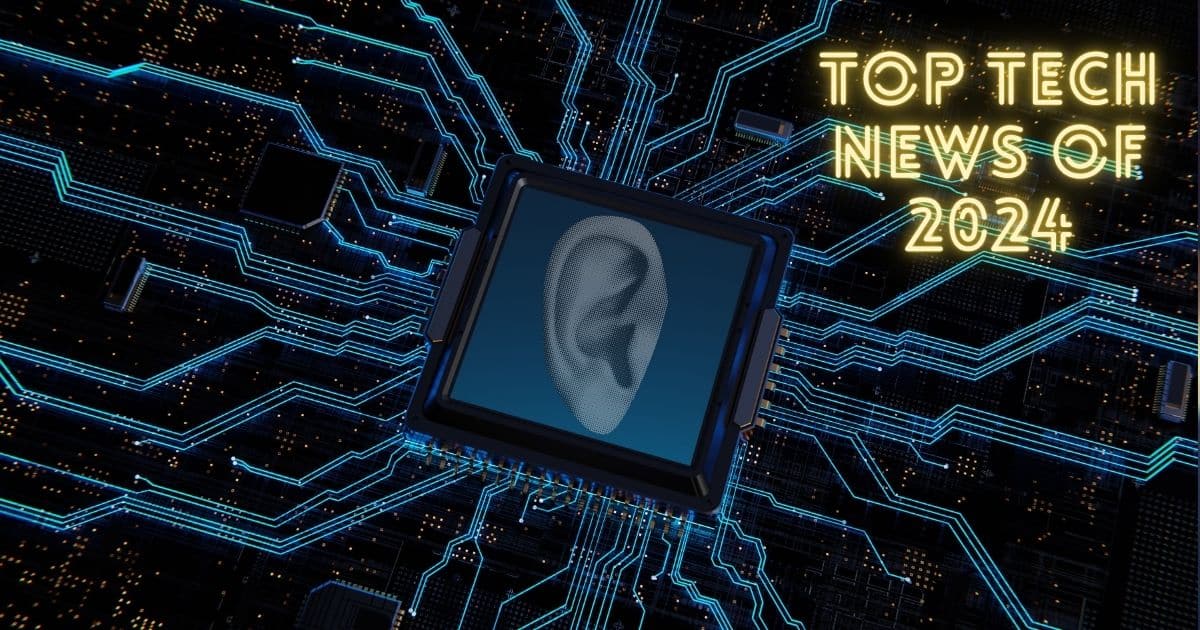In 2024, the hearing technology landscape continued to push boundaries with groundbreaking innovations and significant advancements. From the integration of AI-powered solutions to expanded access for cochlear implants, this year showcased remarkable progress in improving hearing care and accessibility. Major developments included FDA approvals for cutting-edge hearing devices, transformative software solutions, and the introduction of new hearing aid platforms designed to enhance user experiences. These stories highlight the strides made by researchers, manufacturers, and policymakers to address the diverse needs of individuals with hearing loss.
Below, we present the Top 10 Most Read hearing technology stories of 2024, capturing the year’s most impactful innovations and milestones.
Most Read Hearing Tech Stories of 2024
1) First Over-the-Counter Hearing Aid Software Receives FDA Authorization
In September, the U.S. Food and Drug Administration announced authorization of the first over-the-counter (OTC) hearing aid software, Apple’s Hearing Aid Feature, designed for use with compatible AirPods Pro models. This software enables AirPods Pro to function as self-fitted hearing aids for adults with perceived mild to moderate hearing impairment, enhancing accessibility to hearing support.
2) UmboMic: Researchers Develop Implantable Microphone that Could Pave the Way for Fully Internal Cochlear Implants
Researchers from MIT, Massachusetts Eye and Ear, Harvard Medical School, and Columbia University have developed the UmboMic, an implantable microphone designed to enable fully internal cochlear implants. This device, a 3×3 mm triangular motion sensor made from biocompatible polyvinylidene difluoride (PVDF), attaches to the umbo in the middle ear to capture sound vibrations, potentially eliminating the need for external hardware and enhancing the quality of life for cochlear implant users.
3) Phonak Launches Audéo Sphere Infinio and a New Range of AI-Powered Hearing Aids
In August, Phonak introduced the Infinio platform. At the forefront of this platform is the Audéo Sphere Infinio, the first hearing aid equipped with a dedicated real-time AI chip specifically engineered for speech-from-noise separation, aimed to substantial improve hearing performance with advanced sound processing and improved connectivity.
4) GN Announces Shift Away from Consumer Audio to Focus on Enterprise and Hearing Segments
In June, GN announced plans to gradually wind down its Elite and Talk consumer audio product lines, including the recently introduced Elite 8 Active and Elite 10 Generation 2 earbuds. This strategic shift was conducted to allow GN to reallocate resources toward its professional audio, video, and hearing segments, focusing on markets with higher growth potential and profitability. Despite exiting the consumer audio market, GN will continue to support its enterprise-focused Evolve product line, which shares similarities with the Elite lineup, and will maintain customer support for existing products during the transition.
5) All Mobile Phones to Be Hearing Aid Compatible Under New FCC Mandate
In October, the FCC finalized a rule requiring all smartphones sold in the U.S. to be fully hearing aid compatible. This includes both acoustic and telecoil (t-coil) coupling as well as Bluetooth compatibility, which discourages the use of proprietary Bluetooth protocols.
6) Starkey Unveils Edge AI Hearing Aids, Featuring Advanced Processing and Connectivity
Building on the success of its previous Genesis AI platform, Edge AI introduces new features such as the G2 Neuro Processor, deep neural network processing, and enhanced Bluetooth LE Audio capabilities. The technology aims to provide superior sound management, extended battery life, and a focus on health and wellness innovations for hearing aid users.
7) Scientists Develop Biosensor Capable of Detecting Gene Mutations Responsible for Hearing Loss
A team of scientists from the University of Sharjah has unveiled a groundbreaking biosensor capable of detecting gene mutations responsible for hearing loss. This innovative sensor, composed of nanoparticles and nanoarrays of silver, provides precise and rapid diagnosis not only for hearing loss genes but also for other conditions such as cancer, Alzheimer’s, and thalassemia.
8) Eargo Launches Two New OTC Hearing Aids: Eargo SE and LINK by Eargo
Eargo introduced two new over-the-counter (OTC) hearing aids: the virtually invisible Eargo SE and the earbud-style LINK by Eargo. The Eargo SE offers a rechargeable, completely-in-canal design with app support, while LINK features Bluetooth 5.3 streaming capabilities. These self-fitting devices aim to provide discreet and user-friendly hearing solutions, available online and through major retailers like Best Buy and Amazon. This year the company also announced the introduction of prescription hearing aid models.
9) MED-EL Receives FDA Approval of Expanded Candidacy Indications and Hearing Preservation Results for Cochlear Implant System
In November, MED-EL announced FDA approval for expanded cochlear implant candidacy, now including adults with bilateral moderate-to-profound hearing loss and specific word recognition scores. The approval also allows MED-EL to make FDA-cleared claims about preserving residual hearing with their FLEX electrode arrays, which is designed to reduce cochlear trauma. These advancements are expected to improve access to cochlear implants and address their underutilization among eligible candidates.
10) Phonak Announces FDA Cleared Self-Replacement Option for Lyric™ Hearing Aids
Phonak announced that the U.S. Food and Drug Administration (FDA) has cleared a self-replacement option for its Lyric™ hearing device, allowing experienced users to replace their devices independently. This development aims to enhance user convenience by reducing the need for in-office visits, offering benefits such as time savings, increased flexibility, and uninterrupted hearing. The self-replacement option is guided by hearing care professionals and is available through certified Lyric providers in the United States.
As we reflect on 2024, it’s clear that the advancements in hearing technology have not only pushed the boundaries of innovation but also reinforced the commitment to improving accessibility and user experience. From groundbreaking research to FDA approvals and transformative product launches, these developments mark significant progress in addressing the needs of individuals with hearing loss.
We look forward to seeing how these innovations continue to shape the future of hearing care in the years ahead.






